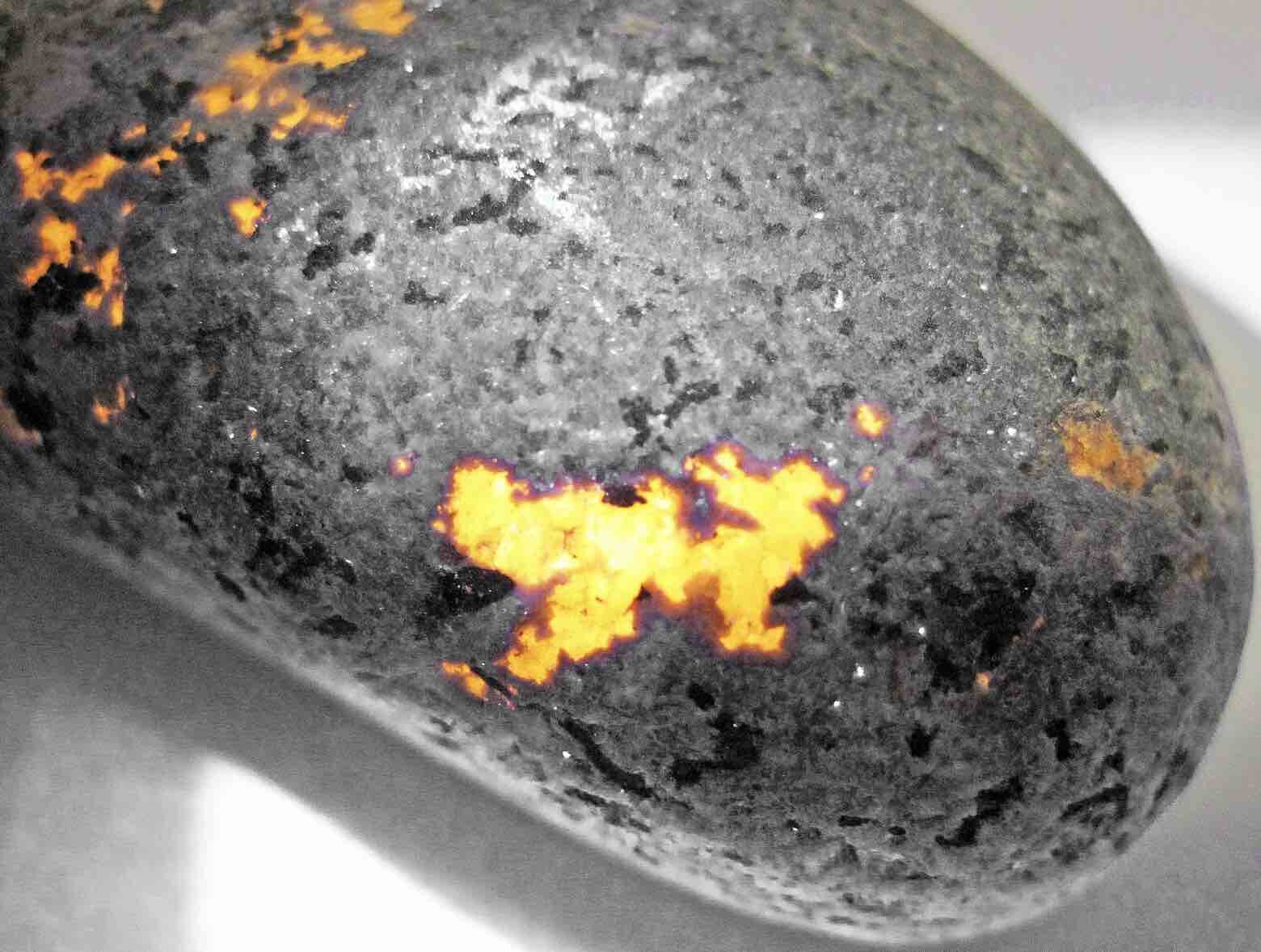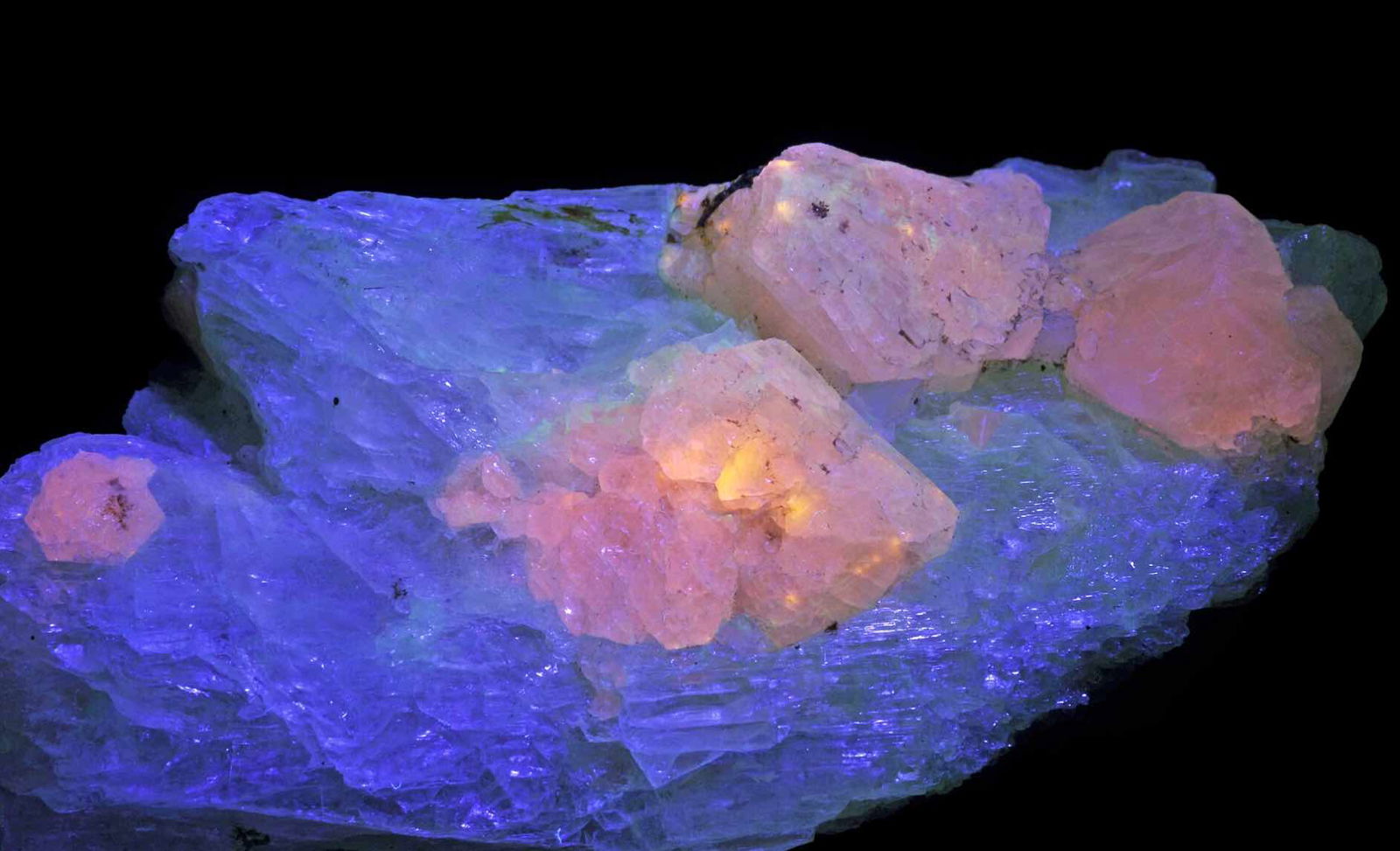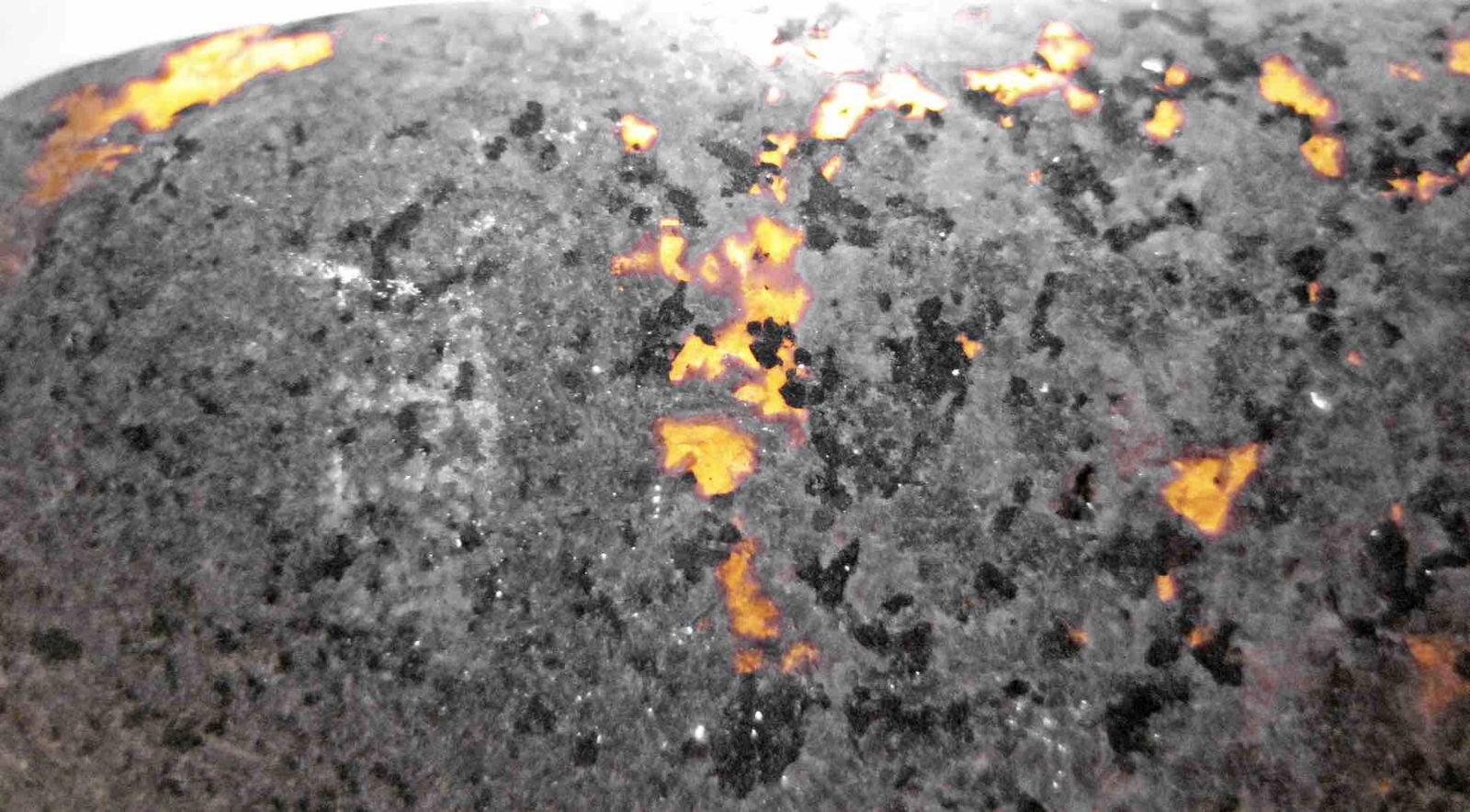In Michigan’s Upper Peninsula, a unique mineral that produces a stunning “cosmic” glow when exposed to ultraviolet (UV) light is capturing the fascination of the rockhounding world.
These unusual stones, dubbed “Yooperlites” by Erik Rintamaki, who is credited with their discovery in 2017, have unique fluorescent qualities that resemble fire escaping from the heart of the surrounding stone when placed under a UV flashlight.
The mineral behind these unique displays is formally known as sodalite, a tectosilicate mineral that, due to its often vivid coloration, is used for ornamental purposes. Sodalite, when seen in large quantities, often has an opaque appearance, although the smaller individual crystalline structures are either transparent or translucent, part of which gives rise to the sodalite’s unique appearance when viewed under UV light.
However, despite Michigan’s well-documented mineralogy, the presence of this fluorescent mineral had gone virtually unnoticed in the state until just a few years ago. In 2017, Erik Rintamaki, an avid local rock collector, began to discover syenite pebbles along the stony shores of Lake Superior that contained small crystalline pockets of sodalite.
According to Rintamaki, the discovery occurred while teaching his brother-in-law how to locate agates along Lake Superior’s beaches. He had previously recalled reading about how many rockhounds had begun using UV lights to aid in detecting and identifying minerals and decided to obtain an inexpensive UV flashlight for such purposes.
On one of his initial expeditions, Rintamaki struck out in the early morning hours to scour Lake Superior’s beaches. Under the illumination of his UV flashlight, he began to find a few small, fluorescent stones, which he began calling “yooperlites,” a name derived from the nickname given to residents of Michigan’s upper peninsula. With time, the small pebbles eventually began to be replaced by larger and larger samples of these curious stones.


It soon became apparent that the strong fluorescent qualities these stones possessed were something unique, and with the aid of geologist Gabe Reyna, the unique characteristics the samples displayed, including their translucent appearance and distinctive mineral composition, led to the positive identification of sodalite, a mineral that somehow had gone unnoticed in previous mineralogical surveys of Michigan’s upper west peninsula.
Under detailed analysis, the Yooperlites Rintamaki discovered were revealed to exhibit fluorescence consistent with hackmanite, a rare chloric sodium aluminum silicate mineral that is rich in sulfur. Most often appearing in pink or violet shades, it can sometimes also appear in tones of grey or even white. However, due to a unique optical quality hackmanite possesses known as tenebrescence, this unique mineral has the unusual ability to change its coloration under certain kinds of light and even glow in the dark, qualities that helped it garner a rather fitting nickname: “the chameleon stone.”


In addition to its hackmanite-like fluorescence, tests of Rintamaki’s samples involving scanning electron microscopy and energy-dispersive X-ray spectroscopy carried out at Michigan Technological University helped reveal several key elements. The presence of aluminum, chlorine, oxygen, silicon, and sodium was confirmed in the samples, all of which were consistent with sodalite.
At the time, the positive identification of sodalite had been something of a mystery. Although syenite clasts are a relatively common feature in Michigan, the fluorescent syenite samples containing sodalite that Rintamaki had revealed with the aid of his UV flashlight probably had origins much further away, along the north side of Lake Superior within the Coldwell Alkaline Complex in Ontario, Canada. So how could the samples have made their way all the way to the lake’s southern shores where “Yoopers” like Rintamaki could find them?
As far back as 1779, Swiss geologist Ferdinand de Saussure described massive granite boulders that had somehow found their way onto limestone deposits in the sub-alpine Jura Mountain range. These out-of-place granite bounders were dubbed “erratics” by de Saussure, derived from the Latin word errare meaning “to wander.” For a time, these curiosities of nature baffled early geologists, although, by 1840, Swiss-American geologist J.L.R. Agassiz proposed that these massive “wandering” boulders had actually been transported thousands of years ago with the help of glaciers that once blanketed the northern hemisphere.
Much like the erratics that once baffled 18th—and 19th-century geologists, the samples Rintamaki had discovered along the shores of Lake Superior had also been transported there from their original home far to the north through natural processes related to continental glaciation during the last Ice Age.
The discovery of “Yooperlites” in Michigan helps to reveal the extent to which the region’s mineral diversity remains underexplored and has helped to almost double the number of mineral species now recognized in the state. Indeed, it could be that there are still other minerals in the region that remain undiscovered, awaiting the discerning eye of collectors like Rintamaki who are willing to employ unique methods—and often at odd hours—in their search for mineral wonders and curiosities that would otherwise remain hidden along the shores of the Great Lakes.
For those interested in learning more about Yooperlites, Rintamaki’s official YouTube channel provides a wealth of information about these unique gemstones and other aspects of his rock-hounding pursuits.
Micah Hanks is the Editor-in-Chief and Co-Founder of The Debrief. He can be reached by email at micah@thedebrief.org. Follow his work at micahhanks.com and on X: @MicahHanks.

